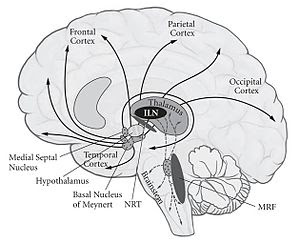Light and mood: Scientists find brain pathway that may explain sensitivity
Light and mood: Scientists find brain pathway that may explain sensitivity
- Another review used utilitarian MRI sweeps to dive deeper into how the mind gets and processes light signals.
- The specialists presented their members to shifting degrees of light to check whether the light would initiate specific districts of the cerebrum.
- Toward the finish of the review, the specialists distinguished a pathway they accept is engaged with state of mind problems.
While no mystery light can influence mind-set, researchers have long needed to see more about that association. Another review distributed in the Proceedings of the National Academy of Sciences investigates how a pathway in the prefrontal cortexTrusted Source, a piece of the mind related with mental and profound working, may assume a part in this.
Specialists from Brown University in Providence, RI, and from the Hebrew University of Jerusalem utilized useful MRI outputs to decide what light power means for the mind.
Miserable and other temperament issues
Individuals with state of mind issues frequently feel a contorted state of mind, and contingent upon the idea of the problem, they might encounter incredibly low temperaments or even raised mind-sets.
Significant burdensome problem, bipolar confusion, and occasional full of feeling issue (SAD) fall under the class of temperament issues.
As per the National Institute of Mental HealthTrusted Source, roughly 21.4% of grown-ups in the United States experience a mind-set jumble eventually in their lives. While certain individuals can oversee side effects through treatment and meds, others experience issues with treatment, which can prompt demolishing wretchedness and even self destruction.
A few medicines for mind-set problems include:
antidepressants (counting tricyclic antidepressants and particular serotonin reuptake inhibitorsTrusted Source)
mental conduct therapyTrusted Source
cerebrum excitement therapyTrusted Source
Once in a while, clinical suppliers suggest that patients with SAD use light boxes (otherwise called sun lights) to assist with reducing side effects. This might be useful since individuals with SAD experience misery during months with decreased daylight.
Cerebrum locales and light
One of the review creators, Dr. David Berson, teacher of neuroscience at Brown University, found that mice have a brain process that makes them delicate to light power in a past report. Dr. Berson and the individuals from the exploration group for the ongoing review needed to expand on this review to check whether they would track down comparable outcomes in people.
The scientists selected 20 solid members for the review and utilized Teflon goggles to open the members to various degrees of light power.
"Every one of the four light forces were tried multiple times in every 6-minute run, and every meeting included five runs, giving 15 all out blocks at each light power," the creators composed.
The specialists saw utilitarian MRI sweeps to check which region of the mind were initiated during the light openness.
As indicated by the review results, 26 cerebrum areas showed what the creators alluded to as "luxotonic-related initiation," meaning these mind locales answered light. Ten of those areas showed "critical supported enactment."
Furthermore, five locales that answered light enactment "have clear association in mental and close to home cycles."
The specialists revealed that the practical MRI filters showed concealment of the prefrontal cortex corresponding to the light power.
As indicated by the review, "These discoveries offer a practical connection between light openness and [prefrontal cortex]-interceded mental and emotional peculiarities."
Cerebrum locales and light
One of the review creators, Dr. David Berson, teacher of neuroscience at Brown University, found that mice have a brain process that makes them delicate to light power in a past report. Dr. Berson and the individuals from the exploration group for the ongoing review needed to expand on this review to check whether they would track down comparable outcomes in people.
The scientists selected 20 solid members for the review and utilized Teflon goggles to open the members to various degrees of light power.
"Every one of the four light forces were tried multiple times in every 6-minute run, and every meeting included five runs, giving 15 all out blocks at each light power," the creators composed.
The specialists saw utilitarian MRI sweeps to check which region of the mind were initiated during the light openness.
As indicated by the review results, 26 cerebrum areas showed what the creators alluded to as "luxotonic-related initiation," meaning these mind locales answered light. Ten of those areas showed "critical supported enactment."
Furthermore, five locales that answered light enactment "have clear association in mental and close to home cycles."
The specialists revealed that the practical MRI filters showed concealment of the prefrontal cortex corresponding to the light power.
As indicated by the review, "These discoveries offer a practical connection between light openness and [prefrontal cortex]-interceded mental and emotional peculiarities."

.jpg)
.jpg)
.jpg)
Comments
Post a Comment